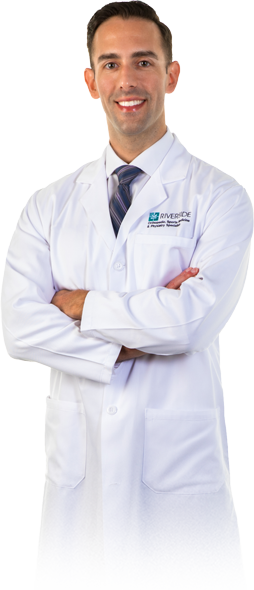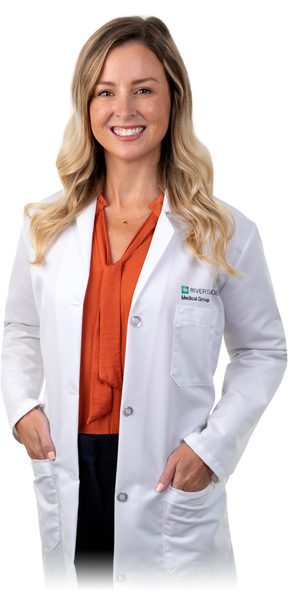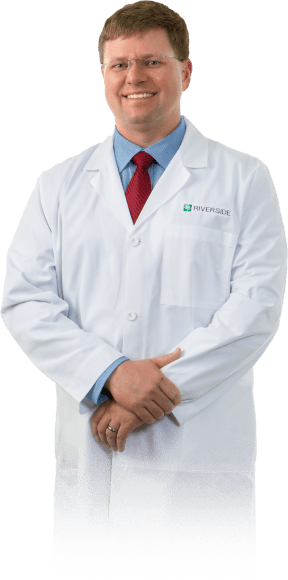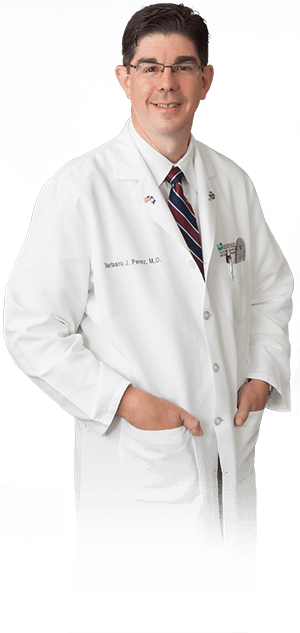Riverside Orthopedic Shoulder and Elbow Specialists
At Riverside, we know that constant shoulder or elbow pain doesn't have to be a way of life. To relieve your pain and inflammation, your doctor may recommend joint injections, physical therapy and other therapies. But, for some, the nonsurgical route doesn't provide enough pain relief and surgery is the next level of treatment. Make an appointment today for personalized care, and don’t live another day in pain.
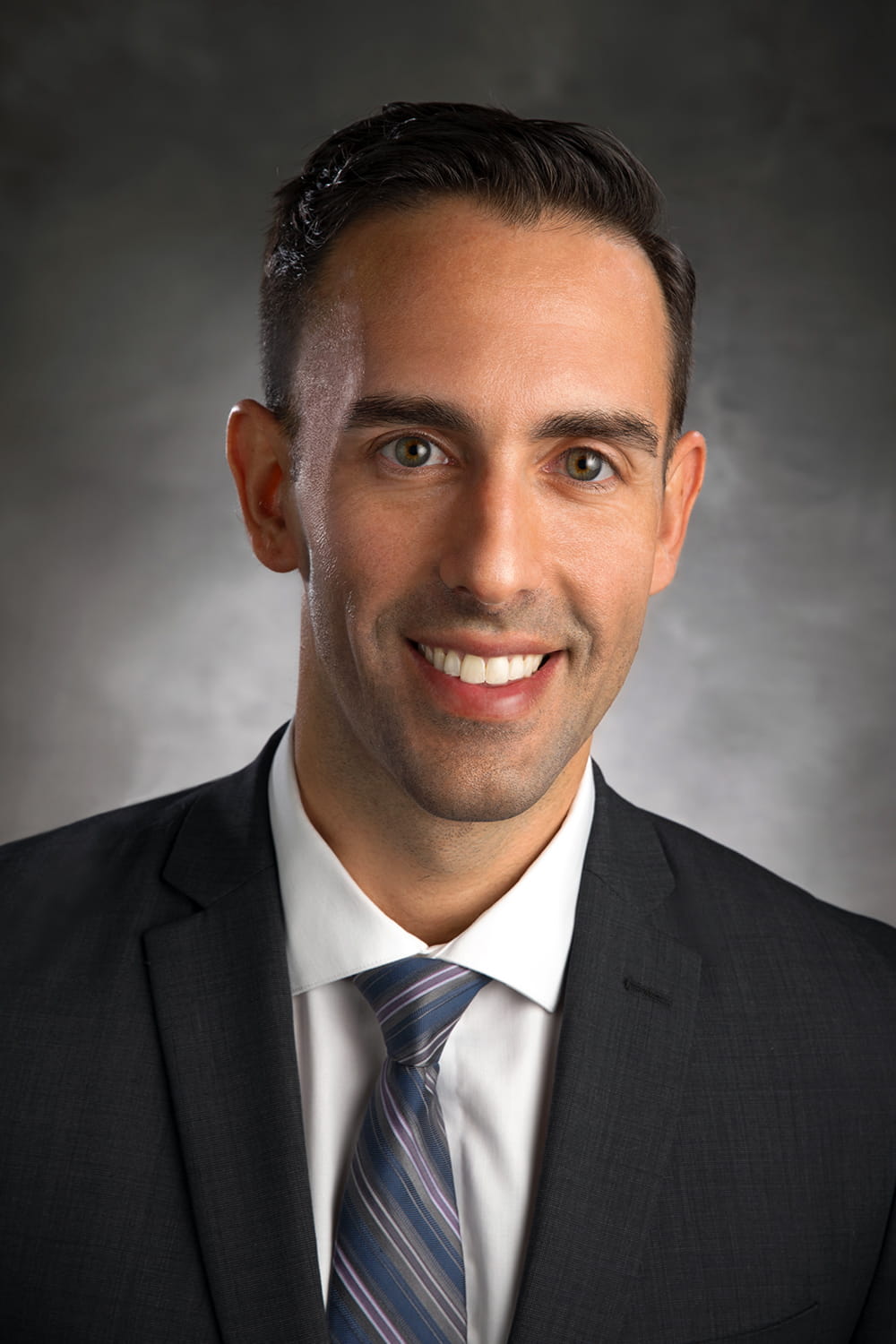
“I know firsthand what it’s like to have a shoulder problem – I had my own shoulder problem for many years before undergoing a successful operation. The improvement in my quality of life was dramatic, and this is what actually led me to go into shoulder surgery in the first place.” - Dr. Paul McLendon
Understanding Shoulder and Elbow Pain and Some Common Treatment Options
Shoulder and elbow pain can be caused by a variety of factors, ranging from overuse to underlying medical conditions. Understanding the causes of these discomforts is crucial to effectively manage and treat them. Injuries such as strains, sprains or fractures are common culprits of shoulder and elbow pain.
Shoulder and elbow conditions can cause a range of symptoms that can greatly impact an individual's daily life. It is important to be aware of these symptoms in order to seek appropriate medical attention and treatment. Here are some common symptoms associated with shoulder and elbow conditions:
- Pain: Persistent or intermittent pain in the shoulder or elbow area is a common symptom of various conditions, such as tendinitis, bursitis, arthritis or rotator cuff injuries.
- Stiffness: Limited range of motion or difficulty moving the shoulder or elbow joint may indicate underlying issues like frozen shoulder or osteoarthritis.
- Swelling: Inflammation and swelling around the shoulder or elbow joint can occur due to injuries, infections or conditions like tennis elbow.
- Weakness: Weakness in the muscles surrounding the shoulder and elbow joints may be experienced, making it challenging to perform certain activities that require strength and stability.
- Numbness or tingling: Some conditions affecting the nerves in the shoulder and elbow region can lead to sensations of numbness, tingling or even radiating pain down the arm.
- Instability: Feeling instability in the shoulder or elbow joint, such as frequent dislocations or subluxations (partial dislocations), could be indicative of ligament tears or joint instability disorders.
- Clicking sounds: Clicking, popping noises during movement of the shoulder or elbow joints may suggest issues with cartilage damage, labral tears or loose bodies within the joint space
When it comes to treating shoulder and elbow conditions, there are several options available. These treatment options aim to alleviate pain, improve mobility and restore function in the affected areas. It is important to note that the specific treatment approach will depend on the underlying cause and severity of the condition. It is important to consult with a health care professional for an accurate diagnosis and personalized treatment plan based on individual needs. Here are some common non-surgical treatment options for shoulder and elbow issues:
- Medications for Pain and Inflammation: Nonsteroidal anti-inflammatory drugs (NSAIDs) such as ibuprofen or naproxen are frequently used to manage pain and inflammation associated with arthritis, tendonitis or acute injuries.
- Physical Therapy: A structured physical therapy program can restore strength, flexibility and range of motion after injury or flare-ups of chronic conditions like Achilles tendinopathy or ankle instability. Modalities such as ultrasound, manual therapy, and balance training may also be incorporated to prevent recurrence.
- Injections for Symptom Relief: Corticosteroid injections into joints, tendons or bursae can reduce inflammation and pain in conditions like arthritis, plantar fasciitis or tarsal tunnel syndrome. In some cases, platelet-rich plasma (PRP) therapy may be offered to promote healing using a patient’s own growth factors, particularly for tendon injuries.
- Rest and activity modification: In mild cases, resting the affected joint and avoiding activities that aggravate the symptoms may be sufficient for recovery.
- Bracing or splinting: Depending on the condition, wearing a brace or splint can help support the shoulder or elbow joint, promote healing, and prevent further injury.
It is important for individuals experiencing foot and ankle issues to consult with a qualified healthcare professional who specializes in orthopedics or foot and ankle surgery. They will assess each case individually and recommend an appropriate treatment plan tailored to meet specific needs for optimal recovery outcomes.
In this section, we will explore a comprehensive list of some common shoulder and elbow conditions. The shoulder and elbow are complex joints that are prone to a variety of injuries and disorders, so understanding these conditions can help individuals identify symptoms, seek appropriate medical treatment and take necessary precautions to prevent further damage.
- Rotator cuff tears: Your rotator cuff consists of muscles and tendons in your shoulder. Tearing any of these muscles either through overusing the shoulder or falling on it can cause shoulder pain and weakness.
- Shoulder arthritis: Shoulder arthritis is inflammation in the shoulder joint that causes pain and trouble moving your shoulder. You can experience multiple types of shoulder arthritis, including:
• Avascular necrosis (AVN) where bone cells in your shoulder die due to a lack of blood flow
• Post-traumatic arthritis due to injuries or surgeries in the shoulder
• Rheumatoid arthritis, also called inflammatory arthritis, is caused by an autoimmune disorder
• Osteoarthritis, which can affect the acromioclavicular joint (the joint by your collar bone) or your glenohumeral joint (the joint where your arm meets your shoulder socket) due to wear and tear on your shoulder over time
- Rotator cuff arthropathy:
If doctors don’t repair a rotator cuff tear, it can lead to rotator cuff arthropathy. In this condition, your shoulder bones rub together, causing irritation, pain and weakness.
- Proximal humerus fractures: Proximal humerus fractures are broken bones in your upper arm or shoulder. They can be caused by car accidents or bad falls. If you break your bone, you will feel pain and may not be able to move your arm at all.
- Labral tears: Your labrum is the cartilage that lines your shoulder joint. If the labrum tears, it can cause pain, trouble lifting your arm and a grinding or popping feeling when you move your arm.
- Proximal biceps tears/tendinopathy: Your bicep muscle connects to your shoulder joint via a tendon. If you overuse this muscle by lifting overhead over and over or making similar motions, these tendons and even the bicep muscle can tear, leaving your shoulder weakened.
- Acromioclavicular (AC) joint arthritis: Your AC joint is where your collar bone meets the highest point of your shoulder. Arthritis here most commonly occurs in middle-aged and older adults.
- Subacromial impingement: The subacromial area of your shoulder runs beneath your collar bone. Your rotator cuff tendons run through this area. They become “impinged” or pinched if they are irritated or inflamed.
- Distal biceps tendon ruptures: Your distal bicep tendon attaches your bicep to the front of your elbow. In the rare case that it detaches from the bone, your bicep muscle can become bunched up around your shoulder, creating a bulge and severe pain.
- Triceps tendon ruptures: The muscles that make up your triceps attach to the back of your elbow. If the tendon ruptures, you won’t be able to fully extend your arm.
- Frozen shoulder (adhesive capsulitis): Characterized by stiffness and pain in the shoulder joint, often resulting from injury or prolonged immobilization.
- Tennis elbow (lateral epicondylitis): An overuse injury causing pain on the outer side of the elbow due to inflammation of tendons attached to the lateral epicondyle.
- Golfer's elbow (medial epicondylitis): Like tennis elbow but affects the inner side of the elbow due to inflammation of tendons attached to the medial epicondyle.
- Bursitis: Inflammation of fluid-filled sacs called bursae that cushion joints, commonly occurring in both shoulders and elbows.
- Tendinitis: Inflammation of a tendon, often caused by repetitive motions or overuse injuries, leading to pain, and swelling in affected areas.
It is important to note that this list is not exhaustive, and there are other shoulder and elbow conditions that individuals may experience. If you are experiencing any persistent shoulder or elbow pain or have concerns about your shoulder and elbow health, don’t wait to consult with a shoulder and elbow specialist for an accurate diagnosis and appropriate treatment.
When medicines and physical therapy haven’t helped and surgery is the best option, the expert orthopedic surgeons at Riverside Health use the latest minimally invasive shoulder surgeries to improve shoulder and upper arm function. Shoulder surgeons can perform dozens of minimally invasive and open surgeries to improve your shoulder function. From repairing tendons to replacing the shoulder joint, these specialized orthopedic surgeons help relieve pain and improve your quality of life.
- Arthroscopic Rotator Cuff Repair: Arthroscopic surgery uses small incisions and a specialized camera and tools to repair tendons, ligaments or cartilage issues. During arthroscopic rotator cuff repair, shoulder surgeons can insert the camera through an incision near your shoulder and then use special tools to reconnect torn areas of your rotator cuff.
- Superior Capsular Reconstruction: If your doctor can’t fully repair your rotator cuff, you might need arthroscopic superior capsular reconstruction instead. In this procedure, your orthopedic surgeon will connect your arm bone to your shoulder with grafted tissues. This connection helps support your shoulder so it can move as it should.
- Acromioplasty: In this arthroscopic procedure, your doctor will look inside your shoulder joint for bone spurs, tissues or other growths that could painfully press against your shoulder tendons. To relieve pain, they can remove the bone spurs and part of the acromion (shoulder bone).
- Arthroscopic biceps tenodesis: During biceps tenodesis, a minimally invasive surgery, your doctor can detach your torn bicep tendon from your shoulder and reconnect it to your upper arm. This procedure can help eliminate pain when you move your arm.
- Anatomic shoulder replacement: Shoulder replacement surgery treats severe arthritis pain in your shoulder joint. Your surgeon will place a metal ball at the top of your arm bone and a plastic liner in your shoulder socket. The ball articulates with the liner, mimicking the motion of your natural shoulder joint.
- Reverse shoulder replacement: In a reverse shoulder replacement, your surgeon places a metal ball in your shoulder socket and a plastic cup at the top of your arm bone. This type of shoulder replacement might be more effective for people who have suffered rotator cuff tears.
- Distal clavicle excision: Sometimes your clavicle (collar bone) can compress the tendons in your shoulder, causing pain. In this procedure, your doctor removes part of your clavicle to relieve pressure and pain.
- Distal biceps repair: During distal biceps repair, your surgeon uses minimally invasive methods to reattach your bicep to your arm bone. After the procedure, you will be able to use your arm better and regain your strength.
- Triceps repair: Similar to biceps repair, your shoulder surgeon reattaches your triceps muscle to the back of your arm bone during this procedure. As your body heals, you’ll regain function in your arm.
Join Dr. McLendon Through His Typical Day in the OR
Join Dr. Paul McLendon to see what a typical day looks like for him, as a board-certified, fellowship-trained shoulder surgeon at Riverside. From anatomic to reverse shoulder replacements and more, hear him explain some of the different conditions and treatments that he and his team address and take a look behind the scenes into the OR to watch them in action. To learn more about Dr. McLendon or to schedule your appointment with a Riverside orthopedic specialist visit riversideonline.com/mclendon or call 757-534-9988.
Riverside Orthopedic & Sports Medicine Specialists Shoulder & Elbow Team
Meet the Rest of the Orthopedic Team
Providing efficient and effective care for any specialized orthopedic need.
Learn More About the Shoulder and Elbow
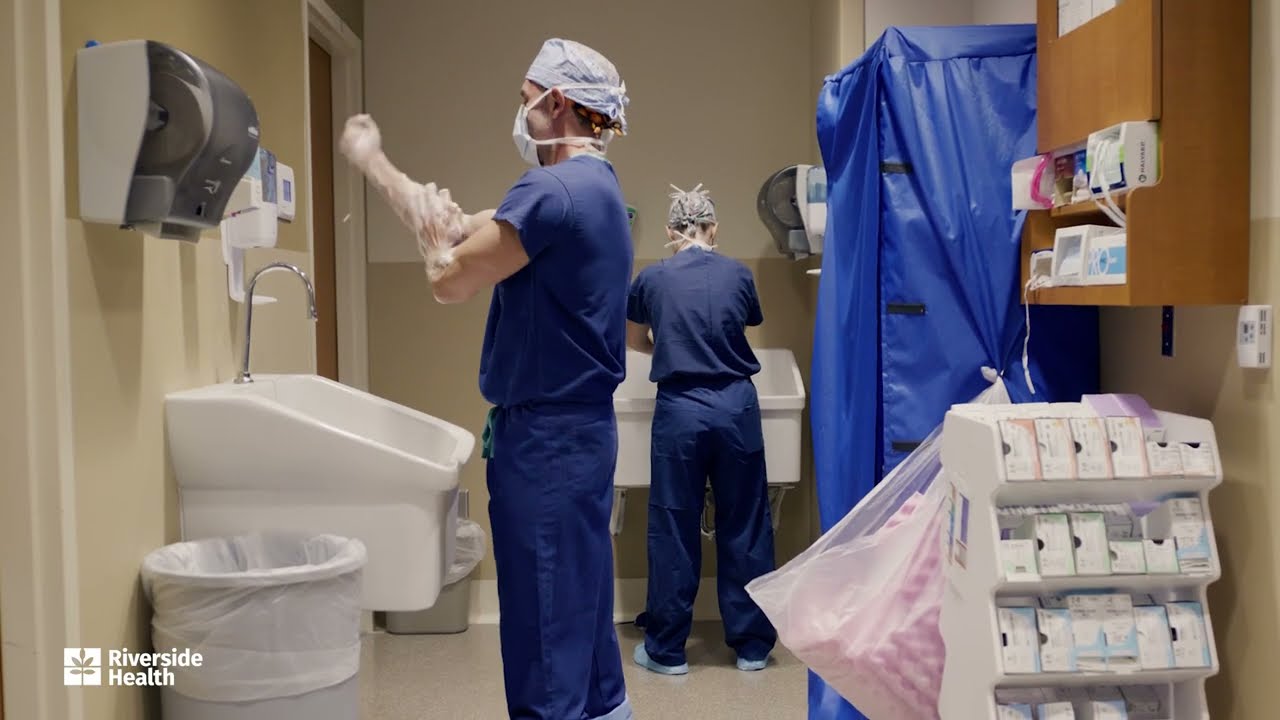
Type
Video
Learn About Anatomic Shoulder Replacement
Find out more about anatomic shoulder replacements and how this surgery can help you get back to living your best life.

